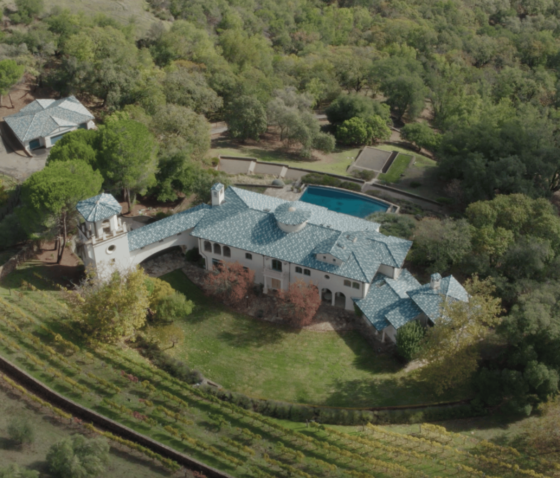Giscours and Caiarossa: fine ecosystems create fine wines
A Margaux Grand Cru Classé, Giscours prides itself on being different. In addition to its architectural heritage, the wine château also considers the forests, farm and residents of Giscours as an important part of its ecosystem. It’s a way of integrating the vineyards into their environment; an approach that Giscours has exported to the Caiarossa Winery in Tuscany.

Château Giscours, or just Giscours?
When you ask Alexander Van Beek if the wine estate is called simply “Giscours” or “Château Giscours”, the Estate Manager answers: “As you wish, but I think that Giscours is a good approach, because it encompasses everything that can be found outside of the Château”. Indeed, Giscours takes the basic concept of a Bordeaux wine estate and expands on it. When you enter the winery, of course, you see the impressive château and the vineyards, stretching out across 95 hectares. But at Giscours, the planted areas are part of a much larger whole.

“The vineyards are tucked away inside a microcosm of almost 500 hectares. We have woods, lakes, fields and cows, as well as sheep and a huge vegetable garden. And most importantly, there’s an integration of all of our employees on the estate. Nearly 20 families live at Giscours”.
Alexander Van Beek, General Director of Château Giscours

Giscours has a model farm that was built in the 19th century. For 10 years, the Suzanne Farm has been greatly revitalised, thanks to a partnership with the livestock conservancy, Conservatoire des Races d’Aquitaine. Thanks to these efforts, you can see Bordelaise cattle and about sixty Landaise sheep, grazing in the meadows of Giscours. A large vegetable garden is also maintained, supplying fresh, seasonal ingredients for the Table de Giscours restaurant, where local specialities can be enjoyed year-round.

Building a fine wine, from the vineyard to the barrel hall
And it’s in this setting, where nature meets cultivation, that the fine wines of Giscours are made. Since 1995, the Albada-Jelgersma family has been at the helm of the estate, whose history goes back to the 16th century. As part of the long history of this Margaux Grand Cru Classé, the family is firmly committed to contributing to this pursuit of excellence. As Adrien Laurent, Strategy and Development Director at Twins, points out, there’s been a “quality revolution” at Giscours over the past few years. Alexander Van Beek attributes this to the vision of Eric Albada first, then to that of his three children, who have taken over from their father.

“We asked ourselves lots of questions, with a focus on precision. We’ve made huge progress in the definition of the tannins and the brilliance of the wine in general. We’ve achieved this by paying very close attention to every stage of the process, whether it’s about the vineyards, the harvest date or the winemaking. You could say we’ve really done some fine tuning”.
Alexander Van Beek, General Director of Château Giscours

The level of mastery has been raised through very in-depth knowledge of the plots, marking of the vines according to their age, successive selections in each plot during harvesting and differentiated winemaking.
The know-how of Giscours, exported to Tuscany: Caiarossa
Since 2004, the expertise developed at Giscours has found a new place of expression: the Caiarossa Winery, in the heart of Tuscany. It’s “the whole team’s other passion”, according to Alexander Van Beek. As for Adrien Laurent, he calls it a “rising star”. Caiarossa is located about sixty kilometres south of Pisa, directly north of the Bolgheri appellation. The wine estate is ideally situated and rooted in nature, and sits at an altitude between 350 and 500 metres, with a view of the Mediterranean.

“It’s a winery where we’ve used all of the expertise we’ve acquired atGiscours. We practically built this estate from the ground up, and our philosophy is really to be as precise and as in tune with nature as possible. We’ve implemented all sorts of measures, to not only define the different terroirs, but all of the surrounding ecosystem.”
Alexander Van Beek, General Director of Château Giscours

In keeping with this close attention to the vitality of nature, the Caiarossa wine estate uses biodynamic methods. The winery produces red and white wines, as well as late harvest wines, honouring the complexity of Caiarossa’s terroir.
As one of the distributors of these wines, Twins is proud to help showcase them around the world.



